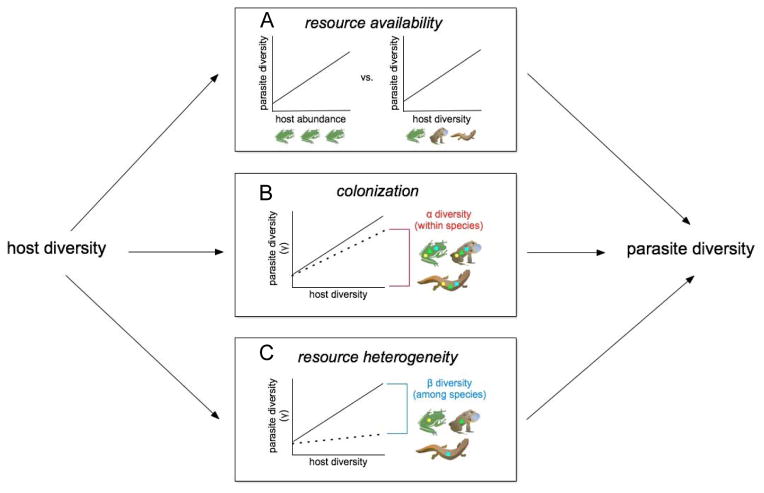Figure 1.
Host diversity can influence parasite diversity through at least three possible mechanisms. (A) First, the relationship may be driven by changes in resource availability (the diversity-productivity relationship), which might be expected if increased host richness correlates with an increase in total host species abundance. In this scenario, the total abundance or biomass of hosts should be a better predictor of parasite richness than is host species richness. (B) Second, variation in parasite colonization (the propagule-pressure hypothesis) may underlie the correlation between host and parasite diversity. If newly arriving host species are accompanied by generalist parasites that spread to already established hosts, we would predict that increases in host diversity should correlate with an increase in the average number of parasite species per host (α diversity), regardless of the identity of that host species. (C) Alternatively, the diversity covariance between hosts and parasites may emerge from changes in resource heterogeneity (the habitat-heterogeneity hypothesis). Here, new host species represent novel habitats for parasites that otherwise could not establish, which would lead to a stronger relationship between host diversity and the among-host diversity in parasite species composition (β diversity). Thus, parasite diversity is increasing only at the level of the host community, rather than within individual hosts or host populations.

